The Use of Stem Cell Cloning in Therapeutic Medicine: Analysis from Islamic Jurisprudence Perspective
Introduction
Nowadays, scientists are conducting research on a diverse range of subjects, including stem cells. The ability of stem cells to regenerate body parts like cells, tissues, and organs is one of their distinctive features. Stem cells are the basic cells for every organ and tissue in our bodies. In human life, we contingent on stem cells to replace injured tissues and cells that disappear every day, as it found in our skin, hair, blood, and intestinal lining. In the human body, stem cells contribute as an internal recovery system during early growth and for the entire life. When a stem cell divides, it has the potential to differentiate into cells with more specific functions, such as red blood cells or nerve cells. In short, stem cells can build up tissues which needed for our body. It has been used to treat almost 80 diseases with more than 45,000 transplants worldwide including the treatment of blood-related diseases such as Leukemia, Tickle Cell Anemia, Thalassemia, and Immune System Disorders. This is in line with the Maqasid al-Shari’ah which is to protect human life from any harm. However, the use of stem cells has raised questions, especially from the Islamic jurisprudence to ensure that it is not harmful and not prohibited to Muslims, especially on the issue of stem cell cloning. Therefore, this article aims to explore and elucidate the Islamic jurisprudence stance on the issue of the use of stem cell cloning in therapeutic medicine applications. It seeks to address the concerns and questions raised within the Muslim community regarding the permissibility and potential ethical implications of utilizing stem cells in medical treatments and aligning the discussion with the principles of Maqasid al-Shari’ah.
Two Main Sources of Stem Cells
First: Adult stem cells (Somatic stem cells) derived from bone marrow, peripheral blood vessels, infant cord blood and spontaneously fallen fetus. This resource does not pose moral, ethical, or religious problems. There have been some scientific advances using adult stem cells. However, adult stem cells are quite limited in terms of their potential and number.
Second: Human embryonic stem cells (hESCs). It comes from a human embryo (blastocyst) generated through an in vitro fertilization procedure (in vitro fertilization, IVF). Embryos are supplied by fertility treatment clinics with the consent of the donors. It can also be obtained through cloning technology (nuclear transfer of somatic cells). Embryonic stem cells are pluripotent; they can become all types of cells whereas adult stem cells are limited to develop into two cell types of the tissue or organ that they originated from.
2.0 Stem Cell for Therapeutic Medicine in Islamic Jurisprudence
One option for treating illnesses or disorders is the use of stem cells in therapy. It is permissible according to Islamic laws which are in line with Maqasid al-Shari’ah to preserve life. Therefore, the law of using stem cells in treatments should be based on the perseverance of life. It will encourage people to treat and provide quality treatment that gives benefits to society.
- Al-Quran:
﴿يُرِيۡدُ اللّٰهُ بِکُمُ الۡيُسۡرَ وَلَا يُرِيۡدُ بِکُمُ الۡعُسۡرَ وَلِتُکۡمِلُوا الۡعِدَّةَ وَلِتُکَبِّرُوا اللّٰهَ عَلٰى مَا هَدٰٮكُمۡ وَلَعَلَّکُمۡ تَشۡكُرُوۡنَ﴾(2:180)
“Allah intends ease for you, not hardship, so that you may complete the prescribed period and proclaim the greatness of Allah for guiding you, and perhaps you will be grateful”.
- Hadith:
عَنْ أَبِي هُرَيْرَةَ رَضِيَ اللَّهُ عَنْهُ عَنْ النَّبِيِّ صَلَّى اللَّهُ عَلَيْهِ وَسَلَّمَ قَالَ مَا أَنْزَلَ اللَّهُ دَاءً إِلَّا أَنْزَلَ لَهُ شِفَاءً
“There is no disease that Allah has created, except that He also has created its treatment”.
(Riwayat al-Bukhari: 5678)
- Al-Qawaid al-Fiqhiyyah
Al-Qawaid al-Fiqhiyyah, being general rulings, aligns with the objective outlined by Maqasid al-Shari’ah to ensure well-being and justice in society. The rules derived, such as averting harm taking precedence over bringing benefit, bearing the lesser harm to prevent greater harm, the removal of harm, harm not being removed by its like, necessities permitting the prohibited, assessing necessities according to their degree, bearing personal harm to avert public harm, removing the greater harm with the lesser harm, hardship bringing about facilitation, if matters become difficult they become easy, and there is neither causing harm nor reciprocating harm. Considering the means and methods, the forbidden means remain forbidden even if the goal is noble. It is not permissible to use any forbidden means in treatment except for the necessity that permits the prohibited or the need that is considered as important as necessity. In addition, in every situation, scholars engage in tawazun (comparative jurisprudence), balancing the benefits (masalih) and harms (mafasid), or evaluating competing benefits or harms to ascertain the most comprehensive and advantageous option.
As a result, obtaining stem cells and applying them to therapy is permissible based on mentioned. It is one of the ways that people might engage in the interests of kindness and piety, whether for themselves, their families, or society as a whole. It corresponds with the concept of religion which is self-preservation (hifz nafs) that brings benefits to the global human race. The engagement of scholars in tawazun (comparative jurisprudence) and the consideration of benefits and harms reflect a dynamic approach that allows for the adaptation of legal principles to the evolving needs of society.
3.0 The Ruling on Benefiting from Adult Stem Cells and Embryonic Stem Cells
Contemporary scholars agree that it is permissible to use adult stem cells based on the generality and arguments that have been mentioned before.
However, scholars differ in determining the decision to obtain embryonic stem cells. This is because they differ in determining the law regarding rulings related to fetuses that have been miscarriage before the spirit is blown i.e., aborting the fetus before 40 days. Therefore, the decision to extract stem cells from an aborted fetus depends on the legal provisions of abortion.
First Opinion: Permissible to abort fetus less than 40 days.
Some of the jurists, such as Abu al-Hassan al-Lakhmi from the Maliki and Abu Ishaq al-Marwazi from the Shafi, have allowed abortion before 40 days. However, after this period, it will be considered impermissible.
Some Hanafi scholars have permitted abortion before the ensoulment for a valid excuse, even if it does not reach the level of necessity. Among them are those who restrict it to cases of necessity.
Second Opinion: Prohibited to abort a fetus in less than 40 days.
The majority of jurists consider the termination of a fetus impermissible, except to preserve the life of the mother. This is the view held by the Hanafi school, which is the predominant opinion. Some scholars from Maliki and Shafi'i schools also tend to support this perspective.
Imam al-Ghazali stated: “The act of aborting the fetus is the same as committing a crime against something that has already existed and succeeded, while that existence has certain stages. The first stage of existence is the attachment of semen in the womb and mixed with the mother's ovum, then it is ready for life. Therefore, damaging the fetus at this stage is a crime”.
The Most Preponderant Opinion forbids abortion of a fetus that is less than 40 days old to obtain stem cells for medical purposes because it violates Islamic morals, manners, and the dignity of the fetus itself. Therefore, the ruling of taking embryonic stem cells from the fetus and taking advantage of them is prohibited if the fetus is deliberately aborted. As for if the fetus falls out spontaneously or is aborted on a doctor’s advice for Shari’ah-permitted reasons or results from an excess of embryos, it is permissible but should concern with the following conditions:
- Must get permission from parents or next of kin first before getting the fetus or excess embryo.
- The excess embryo should be obtained through the IVF process for legally married couples.
4.0 Fatawa Muasirah
According to the Islamic Fiqh Council of the Muslim World League in its seventeenth session held in Mecca on December 17, 2003, deliberated on the topic of “Stem Cells”: “It is permissible to obtain, cultivate, and utilize stem cells for therapeutic purposes or for conducting permissible scientific research if their source is lawful, including:
- To obtain adult stem cells from adults, permission must be obtained from the donor, and the process should not cause harm to the donor.
- To obtain adult stem cells from children, permission must be obtained from their parents or guardians for the benefit and without causing harm to the children.
- To obtain stem cells from the umbilical cord or placenta, permission must be obtained from the parents.
- For surplus embryos obtained through in vitro fertilization (IVF), it is permissible to obtain them with the consent of the parents, and it should not be obtained through unlawful means.
- It is prohibited to obtain fetuses through forbidden methods, such as aborted fetuses for reasons contrary to Shariah, and surplus embryos resulting from the union of unmarried men and women”.
Additionally, the Dar al-Ifta al-Misriyyah issued a fatwa on August 18, 2008, permitting the acquisition of stem cells through therapeutic cloning. The fatwa states: “There are several ways to obtain these cells, including taking them from the aborted fetus at any stage of pregnancy, through the placenta or the umbilical cord, through children or adults, or cloning by taking cells from the inner cell mass”.
The Islamic Medical Sciences Association in Jordan has also adopted this opinion. In its decision, it states: “It is permissible to produce organs in the laboratory away from the womb by using somatic cells from a living organism to grow in the laboratory for organ transplantation to save human lives, provided that this procedure does not harm the person from whom these cells are taken”.
Conclusion
In conclusion, the use of stem cells in therapeutic cloning has been a subject of considerable debate, especially in the context of Islamic jurisprudence. Stem cells, with their remarkable regenerative capabilities, offer significant potential in treating various diseases and injuries. While adult stem cells are widely accepted, the permissibility of embryonic stem cells raises nuanced discussions among scholars. The Maqasid al-Shari’ah, aiming to preserve life and uphold well-being, plays a pivotal role in determining the Islamic stance on the issue of therapeutic cloning. The consensus leans towards the permissibility of using stem cells for therapeutic purposes, provided certain conditions, such as obtaining consent from the parents and ensuring that the procedure of the treatment aligns with Islamic principles.
[As part of Synergised Academic and Student Activities, this article was prepared for the course RKFQ 4141A, Qadaya Fiqhiyyah Mu’asirah: Contemporary Juristic Issues at AHAS KIRKHS, IIUM (Sem 1, 2023-2024]
References
Abu Hamid Muhammad bin Muhammad al-Ghazali. (n.d.). Ihya' 'Ulum al-Din. Beirut: Dar al-Ma'rifah.
Ali al-Qaradaghi, Ali Mohammed Yusuf Al-Mahmoudi. al-Qadaya at-Tibiyah al-Mua'sirah. (2006). 2nd Edition. Dar al-Basyair al-Islamiah.
Fatwa Majelis Ulama Indonesia. (2020. Penggunaan Stem Cell (Sel Punca) Untuk Tujuan Pengobatan. Majelis Ulama Indonesia. no 51.
Ghazali, M., Sahak Ishak, Z., Hamdan, H., & Sawari, S. (2014). Penyelidikan dan Aplikasi Sel Stem Dari Sudut Perubatan Menurut Perspektif Islam dan Agama Lain di Malaysia. Malaysia: UTM Press.
Hehsan, M. R., Pazudin, I. M., Rosdin, M. A., Izudin, W. A. W., Yustisia, A. N., Nahdah, N. O., & Dahalan, Z. (2023). Human Stem Cell Transplantation: An Overview of The Islamic Perspective's Ethical Issues In Malaysia. Journal of Fatwa Management and Research, 28(3).
Jalaluddin Abdul Rahman as-Suyuti. (1983). al-Asybah wa an-Nadzair fi Qawaid wa Furu' Fiqh as-Syafie. 1st Edition. Dar al-Kutub al-'ilmiah.
Kementerian Kesihatan Malaysia, (2015). Sel Stem. My Health. Retrieved on December 1, 2023. http://www.myhealth.gov.my/sel-stem/
Muhamad Rabi' Anwar Fathul Bab. (2022). al-Hukm as-Syari' wa al-Qanuni li Husuli a'la al-Khalaya al-Jazi'yah wa Dawabituh. al-Majallah al-Qanuniyah, no.14.
Muhsin, S. M., Chin, A. H. B., & Padela, A. I. (2023). An Ethico-Legal Analysis of Artificial Womb Technology and Extracorporeal Gestation Based on Islamic Legal Maxims. The New Bioethics, 1-13.
Primer Stem Cell Bank. (n.d.) "Apakah Darah TaliPusat?. Crycord. Retrieved on December 1, 2023. https://cryocord.com.my/ms/bayi/cordblood/
Primer Stem Cell Bank. (n.d.). Penyakit Berpotensi Dirawat Menggunakan Sel Stem. Crycord. Retrieved on December 1, 2023. https://cryocord.com.my/ms/bayi/penyakit-boleh-dirawat/
Rabithah al-A'lam al-Islami al-Majma' al-Fiqhi al-Islami. (2003). Qararat al-Majma' al-Fiqhi al-Islami bi Rabithah al-A'lam al-Islami, 3(17).
Selangor, F. (2006). Hukum Pengklonan Terapeutik dan Penyelidikan Sel Stem (Stem Cell). Government of Selangor Gazette.
Stem Cell Research and Ethics Subcommittee of National Stem Cell Committee in collaboration with the Obstetric & Gynaecological and Paediatric Services Unit of the Medical Services Development Section, Medical Development Division, Ministry of Health Malaysia. (2009). Guidelines for Stem Cells Research and Therapy. The Institute of Medical Research, Ministry of Health.
Syeikh Ali Jumah Muhammad. (2008), al-Istifadah min al-Khalaya al-Jazi'yah fi al-Hayawan wa al-Insan. Fatwa Dar al-Ifta'. Retrieved on December 1, 2023. الاستفادة من الخلايا الجذعية في الحيوان والإنسان - الفتاوى - دار الإفتاء المصرية - دار الإفتاء (dar-alifta.org)
About the author: Noor Syahirah binti Azmi is pursuing her Bachelor's degree in Islamic Revealed Knowledge and Heritage (Fiqh and Usul al-Fiqh) at AHAS, KIRKHS, in the International Islamic University Malaysia.
Disclaimer
The views expressed in this article are the author’s own and do not necessarily mirror Islamonweb’s editorial stance.

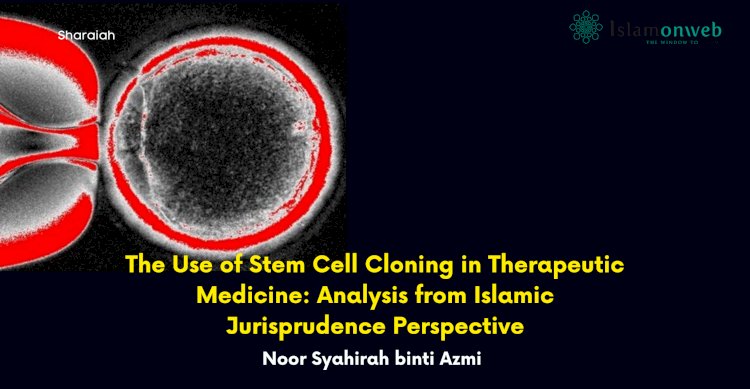


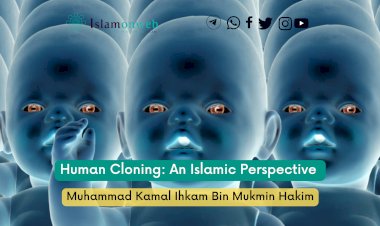
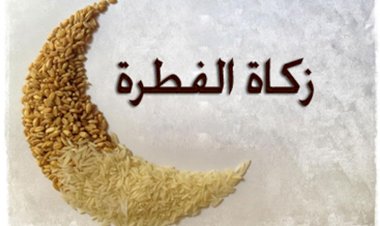
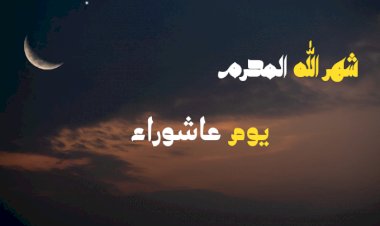

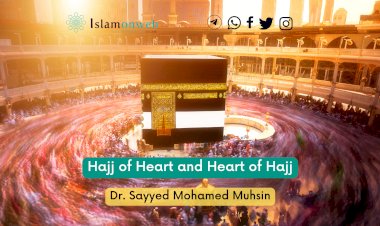















Leave A Comment